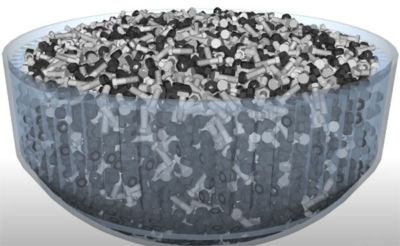-
-
Software gratuito per studenti
Ansys potenzia la nuova generazione di ingegneri
Gli studenti hanno accesso gratuito a software di simulazione di livello mondiale.
-
Connettiti subito con Ansys!
Progetta il tuo futuro
Connettiti a Ansys per scoprire come la simulazione può potenziare la tua prossima innovazione.
Paesi e regioni
Customer Center
Supporto
Partner Community
Contatta l'ufficio vendite
Per Stati Uniti e Canada
Accedi
Prove Gratuite
Prodotti & Servizi
Scopri
Chi Siamo
Back
Prodotti & Servizi
Back
Scopri
Ansys potenzia la nuova generazione di ingegneri
Gli studenti hanno accesso gratuito a software di simulazione di livello mondiale.
Back
Chi Siamo
Progetta il tuo futuro
Connettiti a Ansys per scoprire come la simulazione può potenziare la tua prossima innovazione.
Customer Center
Supporto
Partner Community
Contatta l'ufficio vendite
Per Stati Uniti e Canada
Accedi
Prove Gratuite
ANSYS BLOG
May 25, 2021
Simulate Particle Behavior With Ansys Rocky
Discrete element method (DEM) is a computational modeling framework used to simulate the behavior of granular and discontinuous bulk materials. Simulating bulk material is challenging because of the complex ways that the different discrete elements or particles interact with one another and with their surroundings. Bulk material does not exist in isolation. It often interacts with a solid structure and is embedded in a surrounding fluid. In that sense, DEM is an extension of traditional computational fluid dynamics (CFD) and finite element analysis (FEA). Granular flows are known to exhibit solid-like and fluid-like behaviors, or a combination of both.

ESSS and Ansys are collaborating to provide an improved discrete element modeling (DEM) workflow for quickly analyzing and assessing particle movement across numerous industrial applications. To help accurately and efficiently simulate these bulk motions and their interactions with fluids and structures, Ansys is introducing a new product: Ansys Rocky.
Ansys Rocky’s unmatched speed and accuracy is supported by its multi-GPU capabilities and realistic simulation of non-spherical shapes. From candy to vacuum cleaners, nearly 70% of industrial products experience bulk granular material flows, where different-sized particles with complex shapes interact, potentially impacting a product’s efficiency or structural integrity.
To accurately and efficiently overcome this difficult design challenge, engineers require a DEM solution like Rocky, which features:
- Multi-GPU processing
- Support for complex particle shapes, including flexible fibers and shells
- Accurate particle physics, including breakage
- Integrated multibody dynamics
- Seamless integration to CFD and FEA
- Unique customization and automation application programming interfaces (APIs)

How the DEM Process Works
Rocky is a mesh-free method that solves Newton’s Second Law of Motion for each element/particle. The most important consideration for ensuring a high-fidelity simulation is to account for all the relevant forces acting on each particle. Below, you can see the flow chart for the DEM algorithm.

If the particles are still in range, the simulation will continue to cycle through this process.
The heart of DEM implementation is accurate computation of the forces acting on every particle in the simulation. This requires a robust and accurate contact detection algorithm. Contact detection and the ability to accurately handle particles with various shapes is a critical differentiator between DEM codes.
Standard DEM codes use a glued sphere approach. Rocky uses polyhedral shapes, which have many advantages, including:
- Accurate shape representation including sharp corners and edges
- Actual particle shapes that give accurate particle-particle interactions
- Breakage modeling support

Ansys Rocky’s Advanced Modeling Capabilities
Different modeling capabilities are needed to accurately describe and predict particle-level phenomena. Rocky offers industry leading models to get you the most accurate answers.
Multiphysics Modeling
Rocky is integrated into the Ansys Workbench environment and couples seamlessly with Ansys Fluent and Ansys Mechanical for CFD-DEM and FEA-DEM simulations.
There are two methods for CFD-DEM simulations: one-way or two-way coupling. One-way coupling is when the fluid field affects the particle flow, but the particles do not affect the fluid flow. Two-way coupling is when the fluid flow affects the motion of the particles and the particles in turn affect the motion of the fluid.
For FEA-DEM simulations, geometry loads from Rocky are passed to Ansys Mechanical to evaluate structural stresses. By coupling Mechanical with Rocky, engineers can simulate transient cases while incorporating motion of parts and time-varying loads on boundary elements.
Complex Particle Shapes
Rocky enables you to simulate a system with real particle shapes and sizes, specifying both round and truly non-round particle shapes. You can mix and match different shape, size, flexibility and adhesion combinations to create your own unique particle sets. Either use Rocky’s default shapes or define and import your own custom shapes, including fibers and shells, both rigid and flexible.
Breakage
Rocky’s unique discrete breakage model preserves mass and volume of the complex particle shapes considering the collision location at the particle’s surface along with its consequent internal stresses. This approach enables you to accurately capture shape-dependent breakage and crack propagation.
Adhesion
Rocky can handle both dry and wet bulk materials. Wet materials have the added complexity of cohesion/adhesion, which Rocky captures by modeling the adhesive force as a function of the stress and scaling it with the contact force. Rocky offers several different adhesive force models to replicate the different adhesion situations that wet bulk materials encounter in different applications.
Flexible Fibers
Flexible fibers can be simulated by connecting aligned sphero-cylinders by means of virtual bonds, which have elastic and viscous properties. Relative displacement between them may produce linear and angular deformations of the bonds, leading to bending and flexing of the fibrous material.
To learn more about the features discussed in this blog, and even more on Rocky, view for one of our 15-minute webinars.
Or get the latest on Rocky in our webinar: Ansys 2023 R2: Ansys Rocky What’s New.